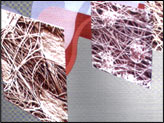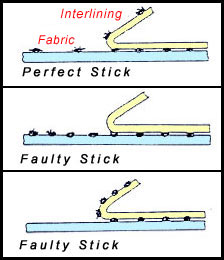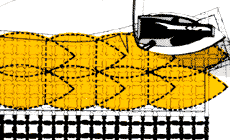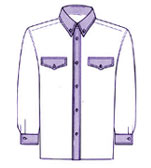|





|
DEFINITION
OF INTERLINING
Interlining
is the general name of the textile lining used in dry-clean garments as
well as in washable clothes, dresses, blouses and shirts. Interlining
is used both in larger parts of the said items such as the shoulders,
yokes, front panels, foldable and joinable parts and also in smaller
parts like the collars, waists and cuffs.
POINTS
TO BE TAKEN INTO CONSIDERATION WHEN SELECTING LINING
1-
Compatibility of the lining and the type and finish of the fabric.
2- Compatibility of the lining with the purpose of the garment and the part
of the garment in which it is to be used.
3- Compatibility with the characteristics
of the desired feel of the cloth.
4-
Compatibility with the desired resistance to washing, dry cleaning,
ironing and drying.
5-
Compatibility with the type, cut and colour of the garment.
6-
The ability of the lining once put into place not to change the quality
of the fabric.
7-
The importance of carrying out preliminary tests on the fabric sample.
POINTS
TO BE TAKEN INTO CONSIDERATION WHEN STICKING THE LINING
The
points to be taken into consideration during this process can be listed
as below:
a. First and foremost, you
should be sure that the appropriate type of lining is used for the
fabric.
b. The fabric and the lining
should be placed one on the other lengthwise in such a way that their
directions match.
c. Sufficient heat should be
applied for the sticking.
d. You should perform in
adequate pressure degrees. The low pressure decreases the heat transfer
and permeability and consequently the strength of adhesion, resistance
to washing and dry cleaning are reduced. To the contrary, high pressure
causes the fabric to show the traces of glue and this effects touch,
resistance to washing and dry cleaning negatively.
e. Sufficient time for the
sticking process should be applied.
f. In the event that a
pressing machine does not exist in the workplace and the process will be
done with an iron, the iron should be pressed on the fabric without
rubbing and without using any steam and the pieces should be processed
one by one.
g. The dimensions of the
lining to be applied should not be larger than the dimensions of the
fabric. Otherwise, the excess lining soils the tape while passing
through the machine and the glue is transferred onto the next piece of
fabric. |
|
TEST METHODS APPLIED
TO INTERLINING
1-
Type of fibre and glue
2- Quantity of the fibre and glue
3- Thickness
4- Feel
5- Resistance
6- Change in the dimensions of the lining (after application of
heat and steam)
7- Strength of separation (degree of
adhesion).
8-
Resistance to washing, dry cleaning and steaming.
9-
Water- resistance
|

|
